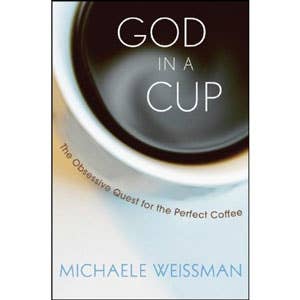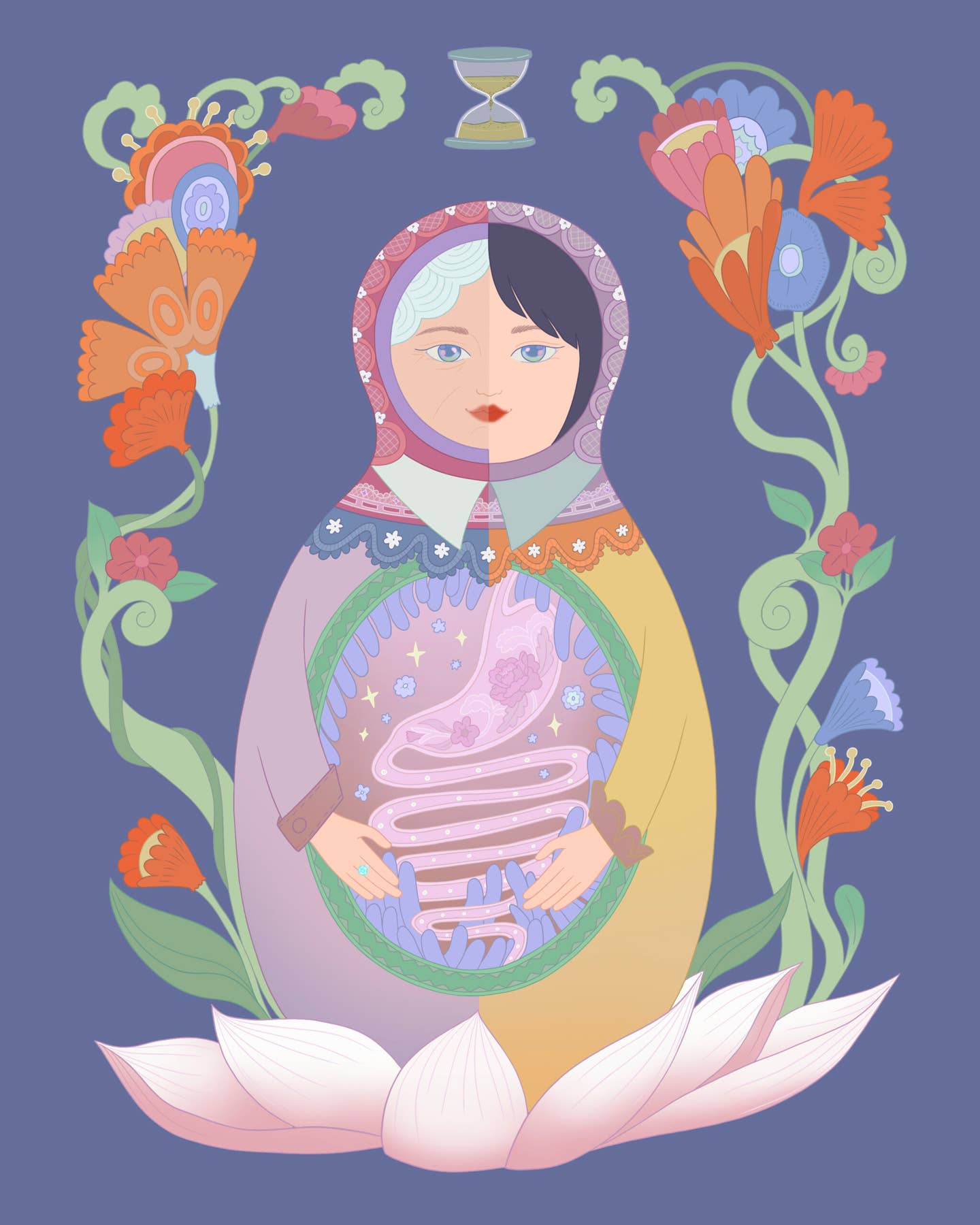
A Flawless Cup
Journalist Michaele Weissman has written extensively about coffee for the New York Times and the Washington Post, but her new book, God in a Cup (Wiley, 2008), approaches the subject in a far more personal way. Focusing on the rapidly growing specialty coffee sector and three young roasters in particular, Weissman recently trekked around the world, exploring everything from the challenges faced by coffee farmers in Burundi and Rwanda to the unlikely winner at last year's barista championship in Los Angeles. Along the way, Weissman decodes the intricate coffee chain, befriends notorious coffee personalities, and reveals the most lusted-after varietals. (The book's title comes from one lovestruck man's description of the Panamanian coffee Esmeralda Special.) Recently, SAVEUR caught up with Weissman by phone to learn a bit more about the mysterious brew many of us take for granted.
**You write that for most of your life you thought of coffee as little more than "hot water and Ritalin". When did that change?
**
It was about three years ago at a coffee shop called Murky Coffee that used to be on Capitol Hill. I was there working on a piece about young coffee entrepreneurs for the New York Times. Nick Cho, who owns Murky Coffee, made me a cappuccino with coffee that I now know is Counter Culture Espresso Toscano. He frothed the milk perfectly and put latte art on the top. The coffee was sweet and complex, and the foam on top had a cashmere smoothness to it. I was entranced. I later found out that they call that a "God shot".
**Was that what led to the book?
**
Well, I really didn't know what they [coffee roasters] were talking about until I had that taste moment. I now find coffee very moving. Like wine, it keeps taking me by surprise, and there are so many dimensions to it. I'm also very interested in people's stories, and there are so many colorful personalities in the coffee world.
**What coffee do you drink at home?
**
I follow the Stumptown, Intelligentsia and Counter Culture sites closely and order what's the freshest. Lately I've been drinking La Golondrina from Colombia, which I like to drink with milk in the morning. The most exciting coffee I've had recently is from the Wahgi Valley in Papua New Guinea. It's called Kuta.
**Can you explain how a coffee qualifies as "specialty"?
**
Coffees are tested by professional cuppers at annual events called cupping competitions and are then graded on a scale of one to 100. To be considered specialty, the coffee must score at least an 80.
**Has that scoring system changed the way coffee farmers approach their work?
**
The competitions are definitely becoming more prevalent, so the importance of people's learning cupping skills has come to the forefront for both buyers and producers. Initially, a group led by George Howell of Terroir Coffee decided to auction off the highest-quality coffees as a way of generating attention for growers. This was around 2001. They organized a competition in each coffee-producing country. Now cuppings are happening all over. Because the winning coffees are auctioned off online and growers can earn quite a bit of money, the competitions have really made growers focus on quality. Before these farmers learned how to cup and taste their own coffee, they didn't necessarily drink their own product or know how it was being judged internationally.
**What exactly happens at a cupping?
**
It's a multistep, formal ritual used by coffee professionals to assess the smell and taste of individual coffees. Depending on the cupping, coffees can come from the same region or from different regions and countries. The judges assess the aroma of the dry coffee grounds as well as the grounds when steeped in water. They also judge the body, or mouth-feel, of the coffee. (The best coffees have some thickness or texture rather than feel thin and watery in the mouth.) The cuppers also consider the flavor of the coffee. The range of flavors can include floral tones, fruity tones, earthy and vegetal (but not sour) tones, and a pleasing syrupy quality or brightness, which cuppers call "good acidity". And they judge the quality of the finish because the best coffees continue to develop in your mouth.
**So, the producing of specialty coffee can be attributed to farmers' particular techniques and extra care?
**
Well, it's very similar to wine because you have many issues—the varietal, the terroir, and the talent and skill of the farmer. The skill includes how they approach issues like "Is the cherry picked red?" or "Is the processing done in a timely fashion?" There are all kinds of factors that go into it.
**What made you decide to focus on Stumptown, Intelligentsia, and Counter Culture when you were researching roasters?
**
When I started asking people about the best coffee companies, those names came up over and over again, which is interesting because they're all so different. Then I met up with Peter [Giuliano of Counter Culture] and Geoff [Watts of Intelligentsia] in Nicaragua, and they were friendly and let me follow them around. Duane [Sorenson of Stumptown] was a little more difficult to track down. All three companies were expanding and buying coffee from around the world.
**They also all engage in Direct Trade. Did that play a role in your decision to profile them?
**
In a sense. For me, one of the turn-ons of the story was that these guys have real relationships with farmers. It's not phony. But it's hard because the coffee industry is still a colonial model, and it's not easy to get money to the farmer. The money gets lost with exporters, importers, and in the pockets of others.
**In the book, you question whether the roasters are motivated by philanthropy in their efforts to pay the farmers more money or whether they're just concerned with obtaining the best, most unusual coffees.
**
Yes, there's a tension between those two things.
**Does the one affect the other?
**
I don't think so. These are young companies, and the [Direct Trade] model hasn't been tested for very long; it's still developing. Whether buying high and selling high—that is, Direct Trade—works, we won't really know for another dozen years.
**How is Direct Trade different from Fair Trade?
**
Fair Trade is a certification program developed about ten years ago during a very down market, when high-quality coffees were selling for 50 or 60 cents a pound. Fair Trade promised a higher price to growers. Unfortunately, those prices haven't increased much in ten years.
Consumers should know that Fair Trade marks an attempt to bring some justice to the living conditions of farmers, but it doesn't speak to the quality of coffee. If you're interested in quality, you ought to pay attention to who the roaster is.
**Let's talk about Esmeralda Special, the incredibly expensive coffee from Panama.
**
The sex goddess of Esmeralda!
**What's so great about that coffee?
**
It's basically grown on only one small coffee plantation in Panama, so it's kind of like "I've got some and you don't." There's a bit of sex appeal. But it's also that the story is dramatic. Esmeralda was discovered at a competition in Panama, yet it's originally from Ethiopia.
Daniel Peterson, the farmer who first grew Esmeralda, was almost afraid to enter it in the Best of Panama competition in 2004 because he thought people might think it was defective. It's that different. Instead, the tasters were just blown away because of the oddity. Esmeralda showed up on the competitive table just as the coffee world was cracking open.
**Are more farms now growing Esmeralda?
**
Peterson sold the cherry to several growers. In the next couple of years, it's going to hit the market: not just Panamanian coffee, but Esmeralda from other places too.
**You often compare coffee to wine. Do you think that coffee will eventually become as important as wine in terms of food pairings?
**
I don't think so, but I am hoping that it will become as recognized as wine from a culinary standpoint. Chefs are just beginning to get the coffee thing. Something else that will lead to real growth in the specialty industry is that Counter Culture is now teaching the coffee curriculum at the CIA [Culinary Institute of America]. Previously, culinary schools never had a coffee curriculum.
You traveled to several coffee-growing countries—including Nicaragua and Rwanda—to research this book. What were you the most surprised by?
I got to see a microcosm of the global marketplace, including much hopefulness and many unbelievable challenges. Through coffee, the whole world was revealed.
**Final words on coffee?
**
I hope that foodies are opening their minds to the fact that there is more to coffee than they realize. There's a real resistance to this information, and I'd like more people to allow themselves to try different kinds of coffee. So, to all those people who spend four dollars once or twice a day on a latte from Starbucks: Think about buying a really good pound of beans instead.
Keep Reading
Continue to Next Story










